Google’s decision to phase out third-party cookies by 2023 has raised concerns among healthcare marketers regarding the future of digital advertising. The healthcare industry will face unique challenges in targeting healthcare providers (HCPs) without the support of third-party cookies. The removal of these cookies particularly impacts remarketing campaigns and audience data analysis. Despite these hurdles, the pharmaceutical industry is well-positioned to navigate this change due to its experience in working within strict privacy and regulatory frameworks. This article explores the specific implications of a cookie-less future on HCP targeting, delving into effective strategies, solutions, and best practices to effectively engage with this critical audience segment while prioritizing data privacy.
Expect a shift to first party data
Although obvious, a shift in focus towards more first-party data collection is a priority for most healthcare marketers. Healthcare brands can gain valuable insights utilizing personal outreach and building direct relationships with HCPs to obtain their consent, while ensuring compliance with privacy regulations. Capturing first-party data through opt-in forms, CRM systems, and online registrations will enable healthcare advertisers to continue to employ email blasts and e-newsletters to engage healthcare providers in a personalized manner.
Leverage HCP-specific data
Healthcare advertisers already have access to specialized data sets that remain unaffected by the depreciation of the third-party cookie. Key data partners like Veeva-Crossix and IQVIA will play a large part in the success of HCP campaigns, with the ability to target based on NPI numbers, prescription data, and ICD-10 codes. With audiences built around this data, advertisers can cater ads to the most relevant HCPs for their brand.
In addition, advertisers connecting to these data platforms can tailor optimizations to their advertising based on key physician level data and analysis to understand if the media is working or not, making it imperative for media agencies to understand this data and be able to analyze for key insights for effective advertising optimization. Data partners can offer updated and compliant HCP databases that ensure accurate targeting and strengthen campaign performance.
Next best action
Understanding how HCPs prefer to engage with content and stay up to date on the latest technological advances and medical news in a digital landscape is imperative. New technologies, like Swoop, offer AI driven insights that understand the patterns of content consumption among HCPs, what kind of creative and calls to action are working with them, what channels they prefer to receive information on, and where they are. It can then take the brand information and recommend the next best action for reaching them.
Continue to meet the HCPs where they are
A study published in the Annals of Internal Medicine found that of 100 million patient visits, the average physician spends a little more than 16 minutes per patient using EHRs. Utilizing HCP specific audience targeting within EHR systems, pharma advertisers have found a way to reach HCPs in-office, improving on an age-old strategy of offering prescription savings to patients through their doctors.
In the digital interfaces HCPs see every day, brands can show up and increase the HCPs awareness of their drug brand and provide a savings message when HCPs are making patient prescription decisions.
A recent case study by Veradigm on the Practice Fusion EHR platform showed success. Analyzing two years’ worth of data measuring how awareness messaging on the platform influenced time to treatment, there was a significant difference in the timeline of HCPs exposed to brand messaging, with providers writing brand prescriptions nearly twice as quickly: 64 percent of patients diagnosed by providers in the test group were prescribed branded medications within six months versus only 26 percent of those in the control group.
Explore partners with “new” targeting capabilities
As the Connected TV advertising landscape continues to grow, targeting capabilities are continuing to get better. By collaborating with reputable publishers and leveraging their audience data, advertisers can ensure precise targeting and placement within other environments where HCPs spend their time. Since HCPs are people too, exploring emerging digital media streams where audiences can be tailored with HCP specific data, advertising can now reach HCPs in the comfort of their own home. Additionally, other channels such as social media continue to show increased efficiency in engagement with HCPs.
Maintain strategies that will remain tried and true
Paid search and search engine optimization will continue to aide in targeting HCPs that are actively seeking answers. The new aspect to consider is how AI and search generated experiences will continue to transform what “search” looks like, and how pharma brands will be able to play in a space that is not conducive to all the medical legal regulatory processes that dictate how these brands can show up in these search results.
Programmatic media buying, supported by NPI and ICD-10 lists, will remain a powerful tool for reaching HCPs in the cookie-less world. Machine learning algorithms can optimize bidding strategies based on healthcare contexts and specific audience attributes. By placing ads directly within relevant online environments based on content, such as medical publications or healthcare specific websites, an advertiser can deliver messages aligned with HCPs’ interests and professional context. Leveraging programmatic capabilities helps maximize ad visibility, performance, and cost-effectiveness, without the need for third-party cookies.
Be adaptable
In the world of healthcare advertising, many channels will remain intact and powerful while navigating a cookie-less digital landscape. While several tactics will remain unchanged, how to approach them strategically may be different. It will be important to remain adaptable to the changing landscape to see success.
Healthcare advertisers should embrace emerging technologies that offer alternative targeting methods. Exploring technologies like artificial intelligence, machine learning, and natural language processing will enhance audience understanding and facilitate more effective HCP targeting, while more emerging channels such as voice-based advertising and augmented reality can provide unique opportunities for engaging with HCPs in new ways.
Originally Published on PharmaLive.com by Lori Goldberg



